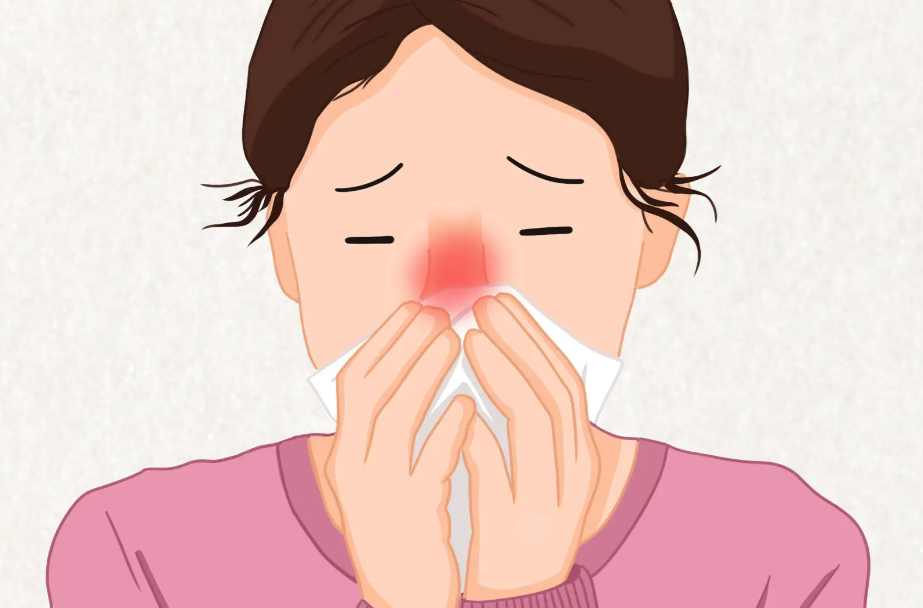
Itchy, stuffy, and runny noses are almost the "standard" of allergy season, and nasal sprays to treat and relieve symptoms are essential. However, these various nasal sprays are not available for free use. Some drugs long-term non-standard use not only can not fundamentally control rhinitis, and may even induce drug-induced rhinitis.
Take you to know the rhinitis medicine family
Rhinitis is a common disease in otolaryngology, mainly characterized by nasal obstruction and runny nose. It is divided into allergic rhinitis, non-infectious non-allergic rhinitis and infectious rhinitis. Allergic rhinitis is a non-infectious chronic inflammatory disease of nasal mucosa mainly mediated by IgE after the body is exposed to allergens. It is also divided into seasonal allergic rhinitis and perennial allergic rhinitis. The most common clinical manifestations of all kinds of rhinitis are nasal congestion and runny nose, some patients may have nasal itching, accompanied by paroxysmal sneezing.
Local nasal administration is the main method to treat acute and chronic rhinitis.
Nasal glucocorticoids are the first-line drugs for the treatment of allergic rhinitis, such as budesonide nasal spray and fluticasone propionate nasal spray, which can effectively control nasal symptoms such as nasal congestion, runny nose, sneezing.
When it comes to hormones, side effects are a common concern. In fact, the adverse reactions of nasal glucocorticoids are less, generally mild or severe local reactions such as local irritation symptoms, nose bleeding, nose dryness or burning sensation. The use of nasal glucocorticoids did not increase the incidence of common bacterial or fungal infections, and had no significant effects on adrenal cortex function, bone metabolism and growth at therapeutic doses.
However, over-dose application can produce a variety of adverse reactions, so during the drug use should follow the doctor's advice or instructions, do not arbitrarily increase the dose, especially in children.
Nasal antihistamines This is also the first line of treatment for allergic rhinitis, the common azelastine hydrochloride nasal spray belongs to this group. Histamine can stimulate nerve endings to cause pruritus, stimulate capillary dilation and glandular secretion, and is the main inflammatory mediators causing nasal symptoms. These drugs can block these reactions caused by histamine and quickly relieve nasal symptoms such as itching and sneezing.These drugs have fewer adverse reactions, and the more common ones are bitter mouth and pharyngeal irritation, which are generally tolerable and do not affect the continued use of drugs. The overall anti-inflammatory activity of nasal antihistamines is slightly weaker than that of nasal glucocorticoids, but the effect is fast, and the two have a certain complementary effect.
Nasal decongestant severe persistent nasal congestion is the most important clinical symptom in patients with rhinitis. Nasal decongestant can be used to quickly relieve nasal congestion symptoms, and oxymethazoline hydrochloride spray belongs to this category.
It should be noted that this type of drug is a simple symptomatic drug, can be quickly apparent, but it has no anti-inflammatory effect itself, and the effect is short, rapid failure and rebound effect, long-term non-standard use not only can not fundamentally control rhinitis, but may induce drug-induced rhinitis. Therefore, such drugs should not be used as a panacea.
Nasal saline lavatory can clear nasal viscous secretions and foreign irritants, reduce the content of local inflammatory factors, alleviate nasal mucosal edema, improve nasal ventilation and drainage and nasal mucociliary function, is a safe and effective auxiliary means, suitable for adults and children, but should not be used in infants.
Use nasal spray for proper posture
In the case of budesonide nasal spray, the bottle is shaken and pressed into the air several times (5-10 times) before the first dose to obtain an even spray. If it is not used for a whole day, the above operations need to be repeated before use again, this time only one air injection pressure can be used.
-
Blow your nose, shake the bottle, and open the protective brown lid.
-
Hold the bottle with your thumb on the bottom and your middle and index fingers on the top of the bottle.
-
Insert the nozzle into the nostril and spray the prescribed dosage. Apply the same spray to the other nostril.
-
Put the cap on the bottle and do not spray more than prescribed.
Use a nasal spray to notice these details
In the process of using nasal spray, a few small details can determine the effectiveness of the drug. Let's check if you got it right.
Tilt your head forward rather than back to avoid the drug reaching your throat and causing side effects. If the drug flows back to the pharynx, it should be spit out and not swallowed, otherwise it is easy to cause systemic side effects.
Do not completely insert the nozzle into the nasal cavity, just insert the nozzle head into the nasal cavity.
When spraying, ensure that the nozzle points to the direction of the nasal conchae outside the nasal cavity, rather than the nasal septum, to avoid damage to the nasal cavity.
In order to ensure the contact time between the drug and the mucosa and the absorption of the drug, avoid inhaling and blowing the nose immediately after the end of the drug.
Avoid multiple people using the same nasal spray to avoid cross-infection. When multiple drugs are administered at the same time, the interval should be not less than 3 minutes to avoid reduced efficacy or adverse reactions.
Pay attention to the method of drug storage. Due to the different requirements of different manufacturers, storage in strict accordance with the instructions, nasal spray can not be frozen, after opening the bottle to use within 6 months.

